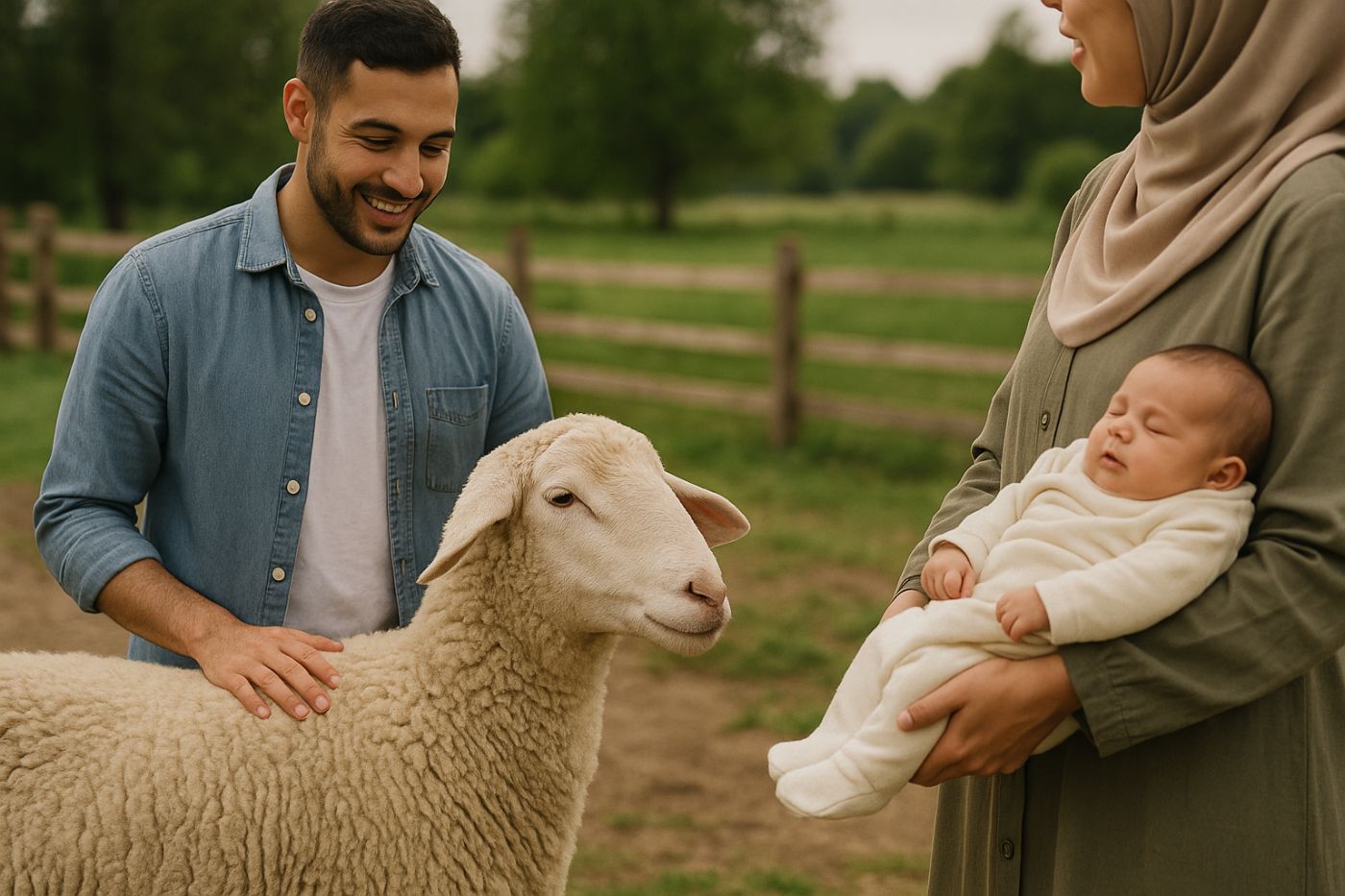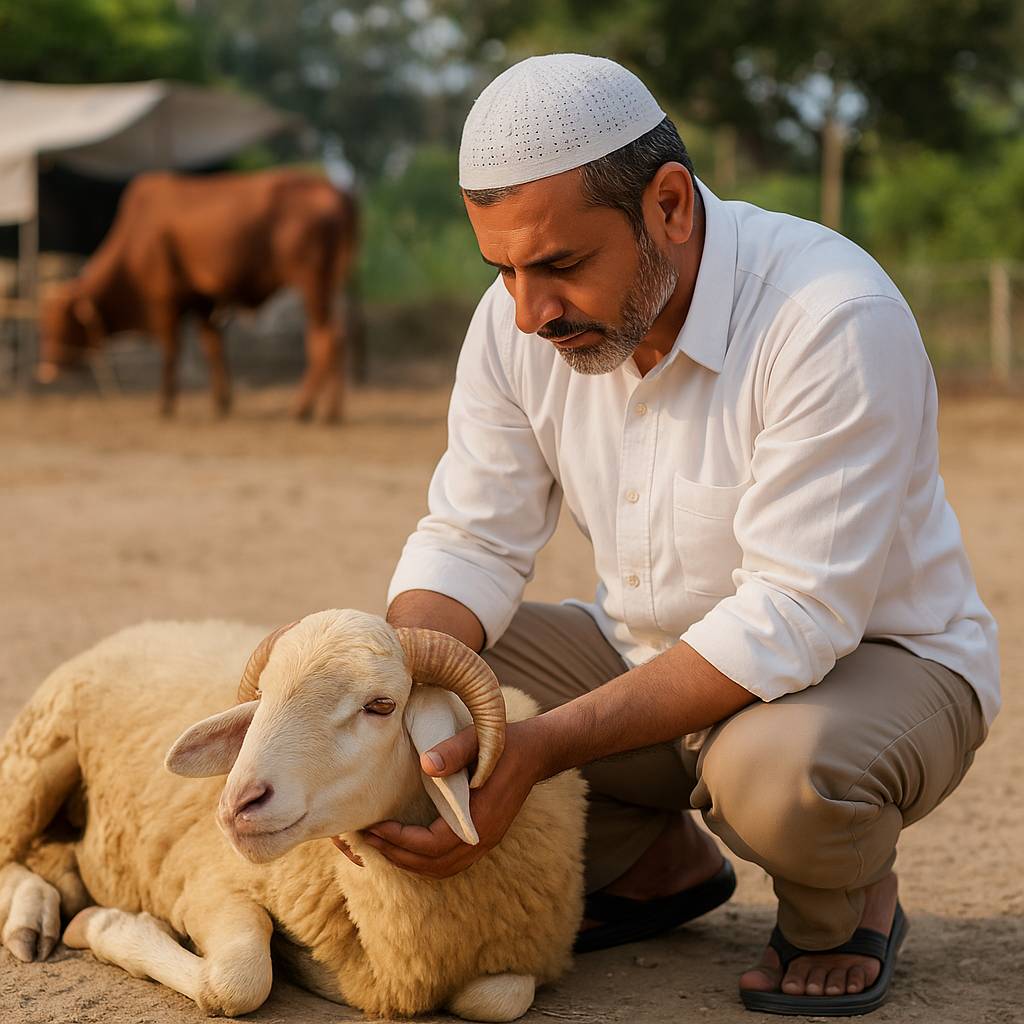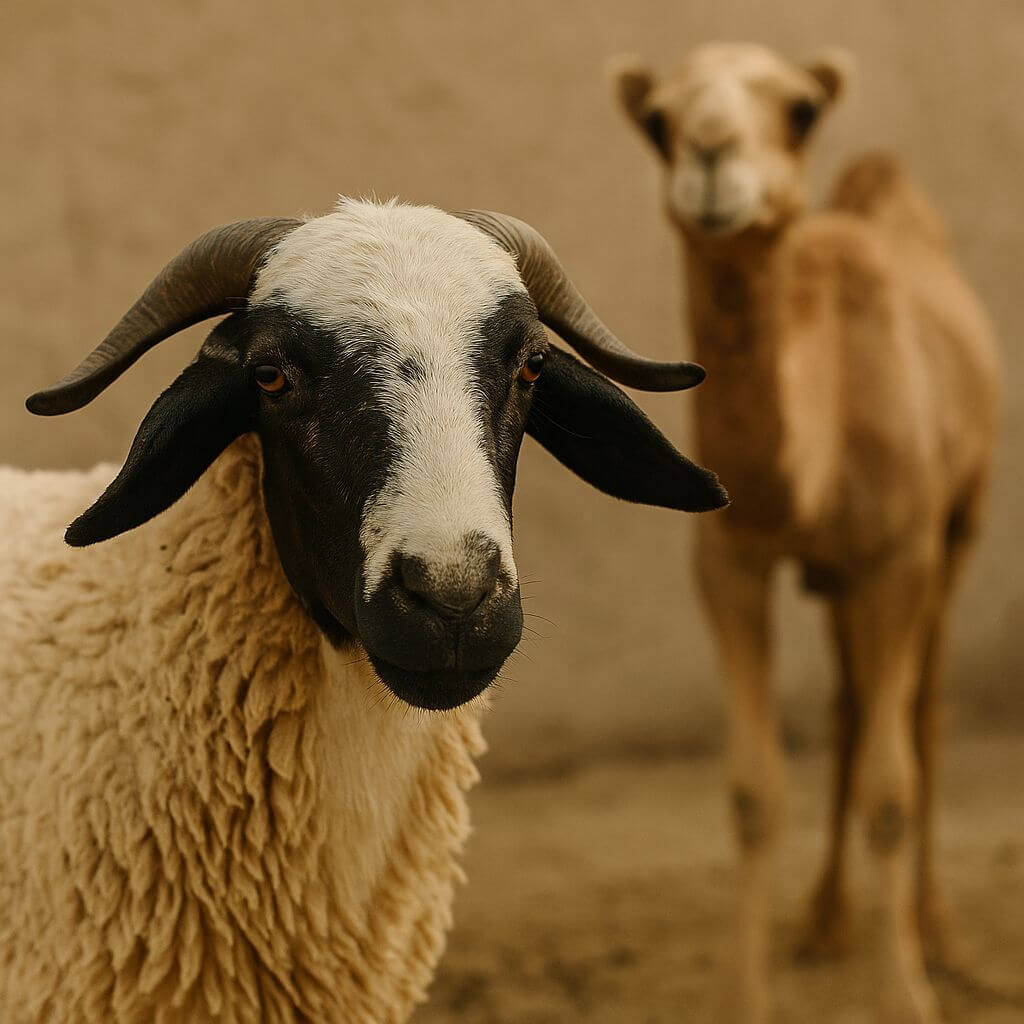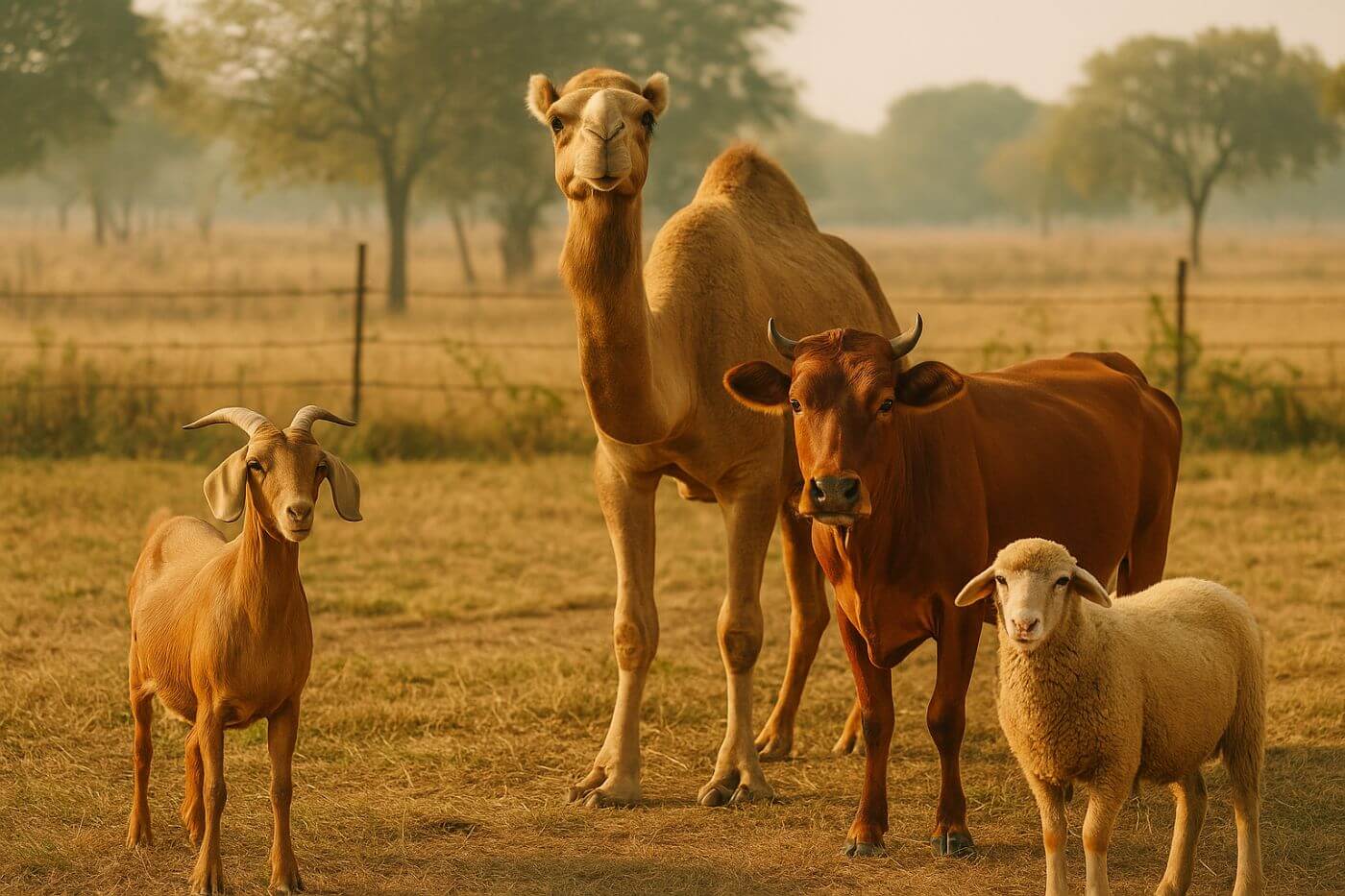
The Difference Between Qurbani and Aqiqah: What You Should Know
In Islam, both Qurbani and Aqiqah involve the sacrifice of an animal, but they serve different purposes and are performed at different times.
Many Muslims, especially in Australia, want to understand when to perform Qurbani or Aqiqah, why they are different, and how each act strengthens one’s faith and community ties.
This article breaks down the key differences between these two important acts of worship.
What Is Qurbani?
Qurbani refers to the sacrifice offered during Eid ul-Adha, commemorating the unwavering faith and submission of Prophet Ibrahim (peace be upon him).
Key facts about Qurbani:
- Timing: Performed between the 10th and 13th days of Dhul-Hijjah after the Eid prayer.
- Obligation:
- Wajib (obligatory) on Muslims who meet the Nisab threshold (minimum wealth level).
- Required annually if conditions are met.
- Purpose:
- To honour Prophet Ibrahim’s devotion.
- To distribute meat among family, friends, and the needy.
- Eligible Animals: Sheep, goats, cows, and camels, slaughtered according to Islamic guidelines.
Qurbani is a global act of unity and charity, deeply embedded in the Islamic calendar and practised by millions of Muslims around the world, including in Australia.
What Is Aqiqah?
Aqiqah is the Islamic tradition of offering a sacrifice to celebrate the birth of a child. It is a Sunnah (highly recommended act) based on the teachings of the Prophet Muhammad (peace be upon him).
Key facts about Aqiqah:
- Timing:
- Ideally performed on the seventh day after a child’s birth.
- If not, it can be performed later without sin.
- Obligation:
- Sunnah Mu’akkadah (highly recommended), not obligatory.
- Purpose:
- To express gratitude to Allah for the blessing of a child.
- To announce the birth and involve the community in celebration.
- Eligible Animals:
- Two sheep for a boy, one sheep for a girl (according to most scholars).
- Animals must meet the same criteria for age and health as in Qurbani.
Aqiqah also involves:
- Shaving the baby’s head and donating the equivalent weight in silver as charity.
- Naming the child during or near the time of the sacrifice.
Summary: Key Differences Between Qurbani and Aqiqah
| Aspect | Qurbani | Aqiqah |
| Purpose | Commemorates Prophet Ibrahim’s sacrifice | Celebrates the birth of a child |
| Timing | 10th–13th Dhul-Hijjah (during Eid ul-Adha) | Ideally on the 7th day after birth |
| Obligation Level | Wajib (for those meeting Nisab) | Sunnah Mu’akkadah (highly recommended) |
| Animal Requirement | Sheep, goat, cow, or camel | Typically sheep or goat |
| Distribution | Family, friends, poor | Family, friends, poor |
| Religious Focus | Obedience, sacrifice, charity | Gratitude, celebration, charity |
Both sacrifices foster gratitude, compassion, and community bonding but serve distinct purposes at different stages of life.
Performing Aqiqah and Qurbani in Australia
In Australia, Muslims often perform both Qurbani and Aqiqah through:
- Certified halal butchers
- Islamic centres
- Charitable organisations that arrange sacrifices on their behalf locally or internationally.
Organisations like ARO (Australian Relief Organisation) help Muslims fulfil these acts easily, ensuring the sacrifice is done properly and the meat is distributed to those in need.
Honour Your Religious Duties with ARO
At ARO, we offer transparent and reliable services for:
- Qurbani during Eid ul-Adha through our Qurban International Hunger Relief Program.
- Aqiqah ceremonies organised year-round to celebrate the birth of a child.
By choosing ARO, you help feed disadvantaged families while fulfilling your religious and spiritual obligations correctly.
Final Reflections
Both Qurbani and Aqiqah symbolise core Islamic values of gratitude, sacrifice, and compassion. Understanding their differences allows Muslims to perform these rituals with greater sincerity and devotion.
This year, fulfil your Qurbani with ARO and share your blessings with those who need it most. Donate today and keep the spirit of sacrifice alive.
Related Project: Qurban



